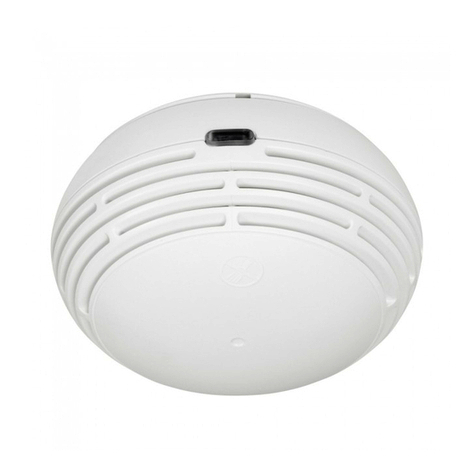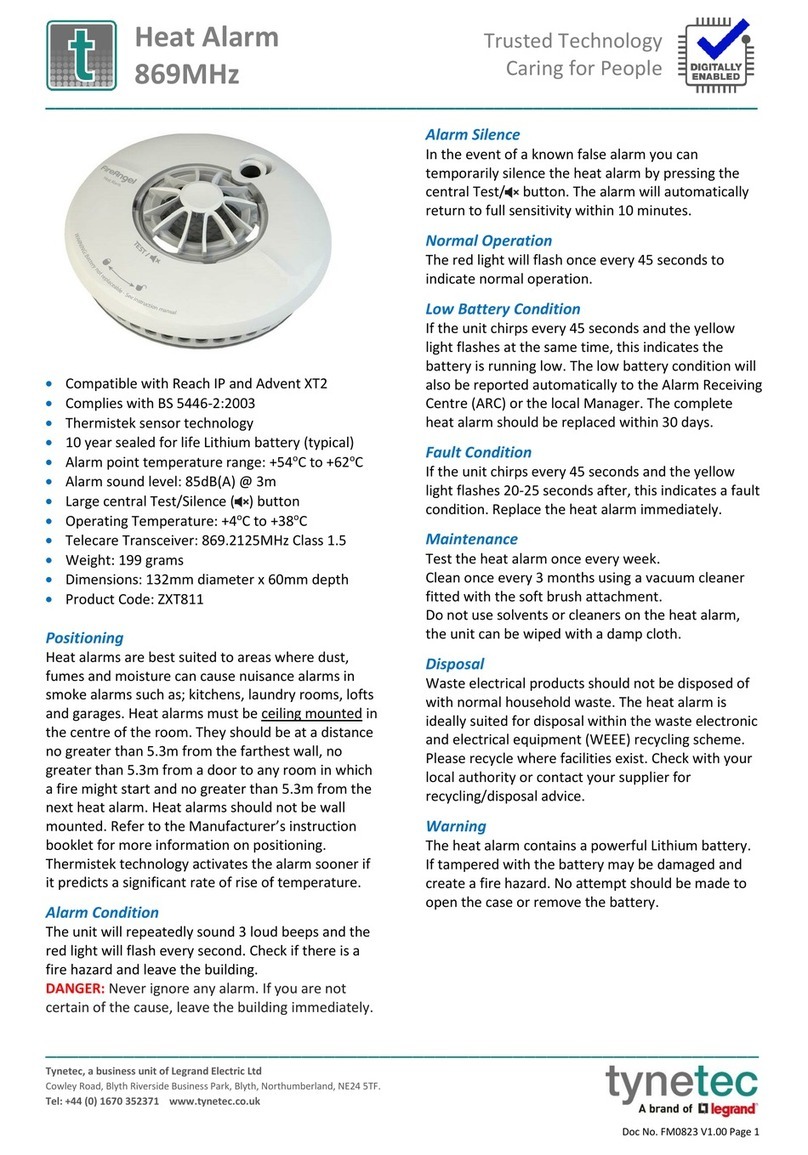_________________________________________________________________________
________________________________________________________________
Doc No. FM0869 V1.00 Page 1
•Compatible with Reach IP and Advent XT2
•Complies with BS EN 14604:2005
•Mains powered strobe with rechargeable standby battery
•Plug-in vibrating pad with 1.5m lead
•Battery powered optical smoke alarm with integral sounder
•Mains powered telecare interface with rechargeable battery
•Devices communicate via RadioLINK wireless network
•Additional RadioLINK smoke, heat and CO detectors available
•RadioLINK network supports up to 12 devices, 30m range
•Strobe light dimensions: 180 x 110 x 85mm (HxWxD)
•Vibrating pad dimensions: 98mm diameter x 30mm deep
•Smoke alarm dimensions: 115mm diameter x 45mm deep
•Telecare interface dimensions: 90 x 190 x 39mm (HxWxD)
•Test button on smoke alarm and strobe unit
•Operating Temperature: 0oC to +40oC
•Telecare Transceiver: 869.2125MHz Class 1.5
•Low battery warning
•Digital Heartbeat
•Product Code: ZXT819
The RadioLINK hearing impaired smoke alarm kit is designed for
installation in dwellings occupied by deaf or hard of hearing
people. If fire is detected the smoke alarm will sound a loud
audible alert, the strobe unit will flash a strong white light
(excellent for day and night-time alerting) and the under-pillow
pad will vibrate to awake the heaviest sleeper.
A fire alarm call will also be transmitted to the ARC or the local
Manager via the telecare interface module.
Smoke Alarm Positioning
The smoke alarm should be sited at least 300mm from light
fittings and walls, ideally as centrally as possible in the room.
Smoke alarms should be positioned no more than 600mm below
the highest point in the room. If positioning on the wall, the top
of the smoke alarm must be between 150mm and 300mm below
the ceiling and at least 300mm from an adjacent wall.
Optical smoke alarms are less prone to false alarms from cooking
fumes and are therefore suitable for locating near kitchens. Like
other smoke alarms they can be susceptible to nuisance alarms
from steam and should not be placed near bathrooms. Refer to
the Manufacturer’s instruction booklet for more information on
positioning. Fitting the smoke alarm onto its base plate will
automatically switch-on its battery supply.
Strobe & Vibrating Pad Positioning
The strobe unit can be left free-standing on a bedside cabinet or
fixed to the wall so it can be seen from the bed. The vibrating pad
should be plugged-in to the strobe unit and placed under the
pillow. The strobe unit must have its standby battery fitted and
be plugged into the mains supply.
Telecare Interface Positioning
The telecare interface unit can be free-standing or fixed to the
wall somewhere out of sight. This communicates via the
RadioLINK network and must be within 30m of the smoke alarm
and strobe unit. The telecare interface unit must have its battery
switched on before being plugged into the mains supply.
Normal Operation
The green MAINS/STANDBY light on the strobe unit should be on
when the mains supply is connected. The green power light on
the telecare interface should also be on. Note: to conserve
battery life the smoke detector does not have any visual
indication that the power is on.
Alarm Condition
The smoke alarm will repeatedly sound loud beeps and the red
light will flash 2 times every second.
The red ALARM light on the strobe unit will flash once every 2
seconds, the white strobe light will flash 40 times a minute, and
the pillow pad will vibrate 2 seconds on/2 seconds off.
Check if there is a fire hazard and leave the building immediately.
DANGER: Never ignore any alarm. If you are not certain of the
cause, leave the building immediately.
Low Battery Condition
If the smoke alarm chirps every 32 seconds and the red light
flashes at the same time, this indicates the battery inside the
smoke alarm is running low. The complete smoke alarm must be
replaced as soon as possible.
The telecare transceiver battery (located inside the telecare
interface) is self-tested once a day, if it’s low for 7 consecutive
days a low battery condition will be reported once a week. The
transceiver should be replaced as soon as possible within 30 days.































